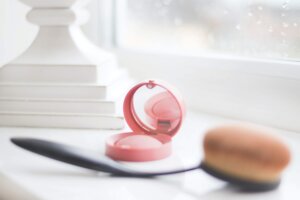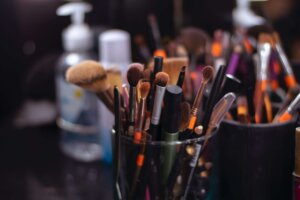Clean Beauty

Makeup is a powerful tool that allows us to express our creativity and enhance our natural beauty. However, it’s essential to remember that proper hygiene is equally crucial in ensuring our makeup routine remains safe and enjoyable. From skincare prep to makeup application and cleaning your tools, maintaining a clean and hygienic makeup routine is essential for healthy skin and preventing potential skin issues. In this blog, we’ll explore the best practices for hygiene and makeup to help you achieve flawless looks while prioritizing your skin’s health and safety.
1. Start with Clean Hands:
Before you begin any makeup application, it’s crucial to start with clean hands and a freshly cleansed face. Wash your hands thoroughly with soap and water to remove any dirt or bacteria that could transfer to your face and makeup products. Follow up with your regular skincare routine to ensure your skin is clean and prepped for makeup application.
2. Use Clean Makeup Brushes:
Your makeup brushes and sponges are breeding grounds for bacteria if not cleaned regularly. Aim to clean your brushes at least once a week using a gentle brush cleanser or mild soap. Allow them to dry completely before using them again. Additionally, replace makeup sponges frequently, as they tend to accumulate product and bacteria over time.
3. Avoid Double-Dipping:
When applying makeup with your fingers or brushes, avoid double-dipping into product containers. This practice can introduce bacteria and germs into your makeup products. Instead, transfer a small amount of product onto a clean palette or the back of your hand and use that as your application surface. This ensures your makeup remains clean and safe for future use.
4. Check Expiry Dates:
Makeup products have a shelf life, and using expired products can lead to skin irritation and breakouts. Regularly check the expiry dates on your makeup products and dispose of anything that has passed its expiration date. Mascara, in particular, should be replaced every three months to avoid potential eye infections.
5. Cleanse Your Face Thoroughly:
At the end of the day, remove your makeup and cleanse your face thoroughly to rid your skin of any makeup residue, dirt, and impurities. Use a gentle makeup remover or cleansing oil to dissolve makeup, followed by a mild facial cleanser to wash away any remaining debris. Properly cleansing your face ensures that your skin is clean and fresh, allowing it to breathe and rejuvenate overnight.
6. Practice Patch Testing:
If you’re trying out new makeup products or brands, always perform a patch test before applying them all over your face. Apply a small amount of the product to a small area of your skin and wait 24 hours to check for any adverse reactions or allergies. This precautionary step can help you avoid potential skin issues and identify any products that may not be suitable for your skin type.
7. Don’t Share Makeup:
Sharing makeup products, especially eye and lip products, can lead to the transfer of bacteria and potential infections. Avoid sharing your makeup with others and discourage others from using your products to maintain good hygiene practices.
8. Sanitize Your Makeup:
For products like pressed powders, blushes, and eyeshadows, you can occasionally sanitize them with rubbing alcohol to eliminate surface bacteria. Gently spritz the surface of the product with alcohol and allow it to air dry before using it again.
9. Store Your Makeup Properly:
Properly storing your makeup can also contribute to maintaining its hygiene. Keep your makeup in a cool, dry place away from direct sunlight and extreme temperatures. This will help prevent the growth of bacteria and preserve the quality of your products.
10. Listen to Your Skin:
Lastly, pay attention to how your skin reacts to different makeup products. If you notice any signs of irritation, redness, or breakouts, discontinue use and seek advice from a dermatologist. Understanding your skin’s needs and being mindful of the products you use will help you create a safe and effective makeup routine.

Conclusion:
Maintaining good hygiene practices in your makeup routine is essential for healthy and glowing skin. From clean hands and tools to regular cleansing and proper storage, these best practices for hygiene and makeup will help you achieve flawless looks while prioritizing your skin’s health and safety. Embrace these tips as part of your beauty routine to ensure that your makeup experience is not only enjoyable but also clean, safe, and nurturing to your skin. Remember, when it comes to makeup, beauty and hygiene go hand in hand for a truly radiant and healthy appearance.




